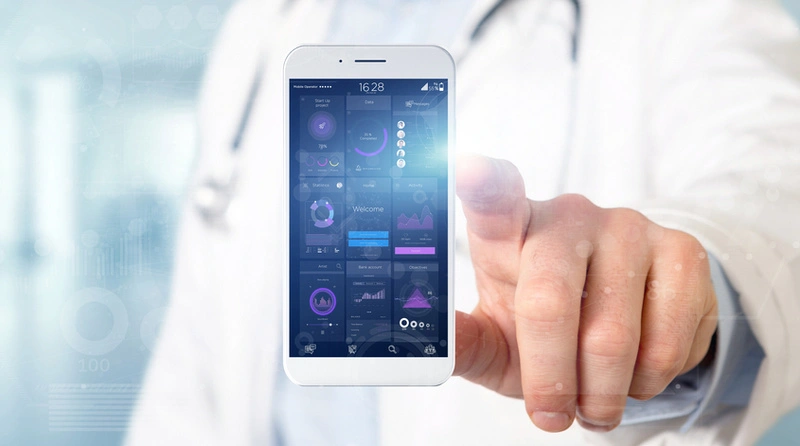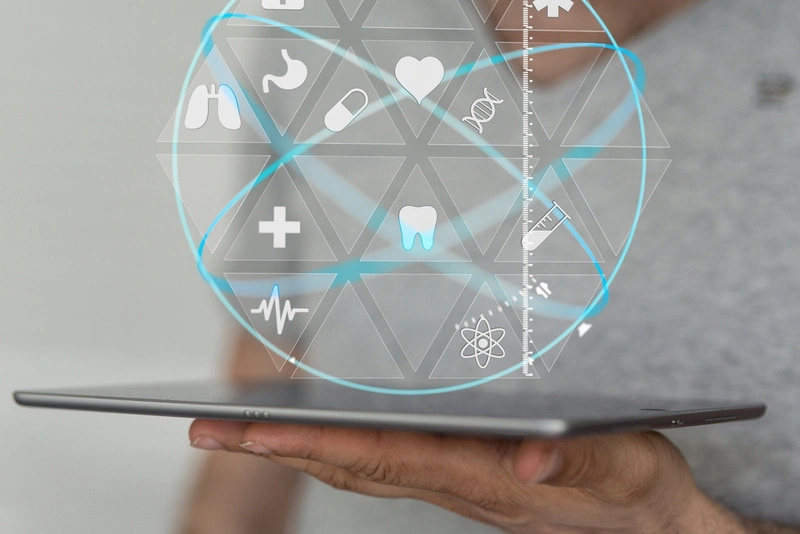Today, the wearable device market is valued at $115.8 billion — and the revenue forecast, by the...
Today, the wearable device market is valued at $115.8 billion — and the revenue forecast, by the year 2028, is $380.5 billion. It’s one of the biggest markets right now thanks to the increased adoption of devices like smartwatches and fitness trackers. Most of these gadgets, to a degree, have medical features which the healthcare industry is leveraging to bring down costs and provide better services. Thanks to multiple innovations, and the push of some of the biggest names in tech, the right wearable medical device - with all its cutting-edge tech - can be successfully adopted by hospitals for RPM care.
What are wearable medical devices?
Wearable medical devices are those that can be worn by a person. They are designed to monitor and diagnose health conditions. In this article, we will explore the most common types of medical wearable devices, their uses, and the benefits of using them.
Medical devices have been around for centuries. The first wearable medical device was created in the 1960s and the first digital one was created in the 1980s. The history of wearable medical devices can be divided into two parts. The first part is from 1960 to 1989 when there were many developments in this field. This era saw the creation of many different types of wearable medical devices including pacemakers and glucose monitors. It also saw some controversy and some failures, such as patients dying from early pacemaker technology.
The more recent history of wearable medical monitoring devices is from 1990 to present day, which has seen an increase in innovation and advancement with these products. Slowly, tech companies started to apply sensors to their gadgets. Sensors that at first were used mainly for entertainment or gaming - as was the case with smartphones.

Sensors like gyroscopes that could detect when you moved your device, allowing more intuitive gameplay. Over time, they began to realize that said sensors could also be employed to gather sensitive bio-data. For example, before GPS was ubiquitous, gyroscopes could track steps or put out an alert when someone fell. Over the years, instead of a focus on the gaming industry, companies began to invest heavily in the development of new sensors and better devices targeted at the healthcare industry.
Today, medical wearable devices are also known as personal health monitors or personal wellness monitors. These devices can be worn on the body to measure various metrics such as heart rate, blood pressure, oxygen saturation levels, etc.
Some of the most common wellness devices and FDA approved wearable medical devices include:
- Neuroprosthetics: These devices are used to support brain function after neurological disorders or injuries.
- Medical imaging systems: These systems typically use cameras for two purposes - for generating images and for displaying the images on a monitor.
- Heart rate monitors: such as FDA approved gadgets that audits an athlete's strain and recovery.
- Nerve Stimulation systems: used for treating ADHD.
- Biosensors: to monitor patients.
- Some Smartwatches: These are wrist-worn fitness trackers that measure heart rate and other biometrics data.
- Glucose monitors: for diabetes.
- Activity trackers: These are wrist-worn fitness trackers that measure steps taken, calories burned, etc.
It’s important to note that not all wearable devices are FDA approved. There is a distinction between wellness devices and medical devices. For example, not all brands of smartwatches have been approved by the FDA – Apple and Fitbit do, nonetheless, have that certification.
Features of smart medical wearable devices
From your fitness tracker to your phone, all the way to your smartwatch, today's wearable gadgets are jam-packed with all types of great features meant to supervise a person’s health — features that hospitals and clinics can collect to gain a better understanding of their patients, improve treatment options, and leverage as impromptu RPM.
Accuracy of the data provided
Many smart devices collect highly accurate data. They typically have many sensors each designed to provide a readout on a particular biosignature. They track activity levels, sleep cycles, heart rate, temperature, blood oxygen levels and dozens of other metrics. And as the years go by we can expect even more improvements.
Safety of use
Most wellness wearable devices are designed to be completely safe – they have been approved by the FCC and tested so they are compliant, safe for the user as well as the environment. Meanwhile, medical wearable devices have acquired an extra layer of certification. They have passed a series of tests and quality control obstacles in order to meet a patient’s need and be biocompatible, this has earned them FDA approval. They have gone through an exhaustive process.
Ease of integration into a hospital’s existing data systems
Today, thanks to APIs - Application Programming Interfaces - the hospital can integrate their existing internal data systems with smart wearable medical devices. This provides team members with real time access to a patient's vitals data along with other data from existing systems.

Patient data privacy and security
One of the biggest issues when devices first came into existence had to do with data privacy and security. Today, that is no longer the case as the technology companies that produce them are optimizing their protocols and using cybersecurity measures - such as encryption - to ensure data is stored safely.
The advantages of smart wearable medical devices in hospitals.
The implementation of the best wearable medical devices in hospitals can help to improve the quality of service delivery.
The advantages of smart wearable medical devices implementation in hospitals are:
- The ability to monitor the patient's health conditions and provide them with timely treatment.
- The ability to remotely monitor the patient's vital signs, thus reducing hospital stays and improving their quality of life.
- The ability to provide on-demand care for patients who are outside the hospital.
With a minor investment, hospitals can take advantage of this technology and use it to offer better service and dramatically reduce their costs.